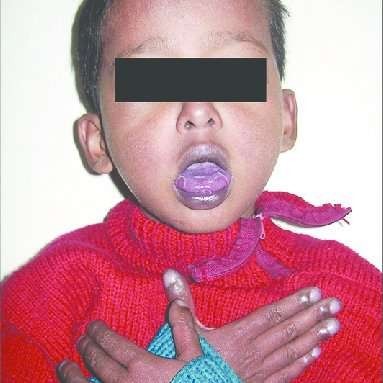A nurse is assessing a 6-month-old infant who has respiratory syncytial virus.
The nurse should immediately report which of the following findings to the provider?
Cough or difficulty in breathing.
Oxygen saturation < 90% or central cyanosis.
Severe respiratory distress (e.g grunting, very severe chest indrawing).
Signs of pneumonia with a general danger.
The Correct Answer is B

This is because oxygen saturation below 90% indicates that the infant is not getting enough oxygen and central cyanosis (bluish color of the skin due to lack of oxygen) is a sign of severe respiratory distress.
Both of these findings require immediate medical attention.
Choice A is wrong because cough or difficulty in breathing, while concerning, may not require immediate reporting to the provider as they are common symptoms of RSV infection.
Choice C is wrong because severe respiratory distress (e.g grunting, very severe chest indrawing), while concerning, may not require immediate reporting to the provider as they are common symptoms of RSV infection.
Choice D is wrong because signs of pneumonia with a general danger, while concerning, may not require immediate reporting to the provider as they are common symptoms of RSV infection.
Nursing Test Bank
Naxlex Comprehensive Predictor Exams
Related Questions
Correct Answer is B
Explanation
The nurse should initiate droplet isolation precautions when admitting a child who has acute epiglottitis.
Epiglottitis is commonly caused by Haemophilus influenzae type B and can be transmitted through respiratory droplets.
Choice A is wrong because obtaining a throat culture is not recommended when epiglottitis is suspected, as it can cause further obstruction of the airway.
Choice C is wrong because assisting the child into a supine position can worsen the airway obstruction.
Children with epiglottitis prefer to sit upright with the chin extended and mouth open.
Choice D is wrong because checking oxygen saturation every 4 hours may not be frequent enough for a child with acute epiglottitis who may require continuous monitoring of oxygen saturation.
Correct Answer is C
Explanation
A potassium level of.2 mEq/L is considered low.
Low potassium levels can cause muscle weakness and spasms.
Hyporeflexia refers to below normal or absent reflexes and can be a sign of muscle weakness.
Choice A is wrong because oliguria, or decreased urine output, is not a common symptom of low potassium levels.
Choice B is wrong because hypertension, or high blood pressure, is not a common symptom of low potassium levels.
Choice D is wrong because hyperactive bowel sounds are not a common symptom of low potassium levels.
Whether you are a student looking to ace your exams or a practicing nurse seeking to enhance your expertise , our nursing education contents will empower you with the confidence and competence to make a difference in the lives of patients and become a respected leader in the healthcare field.
Visit Naxlex, invest in your future and unlock endless possibilities with our unparalleled nursing education contents today
Report Wrong Answer on the Current Question
Do you disagree with the answer? If yes, what is your expected answer? Explain.
Kindly be descriptive with the issue you are facing.
